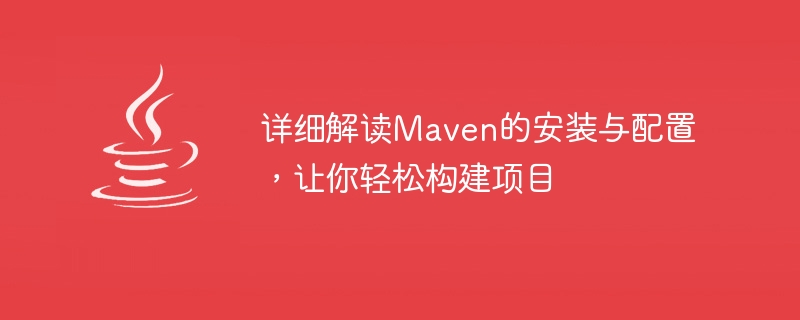

Maven is a Java project management tool that can help developers build, deploy and manage projects more easily. This article will explain the installation and configuration of Maven in detail to help readers quickly get started and use Maven to build projects.
C: pache-maven-3.6 .3;Configure system environment variables:
MAVEN_HOME, the value is the Maven installation path (For example C: pache-maven-3.6.3);Path variable and add %MAVEN_HOME% in# at the end ##;
in the command line. If the Maven version information is displayed, the installation is successful.
, located in the Maven installation directory conf folder;
<localRepository>D:maven-repo</localRepository>
<mirrors>
<mirror>
<id>nexus</id>
<mirrorOf>central</mirrorOf>
<url>http://your.nexus.repo/content/groups/public</url>
</mirror>
</mirrors><proxies>
<proxy>
<id>example-proxy</id>
<active>true</active>
<protocol>http</protocol>
<host>proxy.example.com</host>
<port>8080</port>
<username>proxyuser</username>
<password>somepassword</password>
<nonProxyHosts>www.google.com|*.example.com</nonProxyHosts>
</proxy>
</proxies> Enter the following command on the command line:
mvn archetype:generate -DgroupId=com.example -DartifactId=my-project -DarchetypeArtifactId=maven-archetype-quickstart -DinteractiveMode=false
Enter the directory where the project is located and enter the following command to build the project:
mvn clean install
Add the required dependencies to the
pom.xml file of the project, for example:
<dependency> <groupId>org.springframework</groupId> <artifactId>spring-core</artifactId> <version>5.2.8.RELEASE</version> </dependency>
mvn exec:java -Dexec.mainClass="com.example.MyApp"
The above is the detailed content of In-depth explanation of Maven setup and installation to help you quickly start project construction. For more information, please follow other related articles on the PHP Chinese website!




